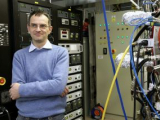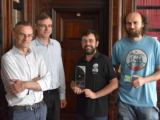In this talk, we present an amusing observation that primordial gravitational waves, if ever observed, can be used to bound the hidden field content of the universe. This is because a large number of hidden fields can resum to potentially observable logarithmic runnings for the graviton two-point function in the context of single field inflation, courtesy of a `large N' expansion. This allows one to translate ever more precise bounds on the tensor to scalar consistency relation into bounds on the hidden field content of the universe, with potential implications for phenomenological...


